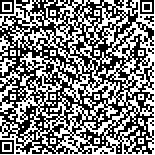付娟娟,夏楠,任彩丽,刘守国,伊文超,王红星,励建安.临床康复路径对亚急性期脑梗死患者功能恢复及医疗成本效益的影响[J].中华物理医学与康复杂志,2017,39(8):577-581
扫码阅读全文

|
| 临床康复路径对亚急性期脑梗死患者功能恢复及医疗成本效益的影响 |
| The effectiveness and cost-effectiveness of clinical rehabilitation for subacute cerebral infarction patients |
| |
| DOI: |
| 中文关键词: 脑梗死 临床康复路径 运动功能 |
| 英文关键词: Cerebral infarction Clinical rehabilitation Motor function Ability in the activities of daily living Stroke |
| 基金项目:江苏省临床医学科技专项项目(BL2012029) |
|
| 摘要点击次数: 5889 |
| 全文下载次数: 7040 |
| 中文摘要: |
| 目的 探讨临床康复路径对亚急性期脑梗死患者功能恢复及医疗成本效益的影响。 方法 采用多中心单盲平行随机对照方法,搜集早期康复治疗结束后的亚急性期脑梗死患者286例,其中15例患者在试验未开始前撤回知情同意书,14例患者出院失访,10例中途退出。最终有247例脑梗死患者纳入统计分析,按随机数字表法分为临床康复路径组(129例)和常规康复组(118例)。临床路径组接受标准化的康复流程干预及药物治疗,常规康复组接受常规康复治疗及药物治疗。分别于康复治疗前(治疗前)及康复治疗3周时和康复治疗6周后,采用简化Fugl-Meyer运动功能评分(FMA)、改良Barthel指数(MBI)对2组患者的运动功能和ADL能力进行评价,比较2组患者康复治疗前后各指标的差值及改善程度;比较2组患者住院6周的费用,并进行成本-效果分析。 结果 临床路径组治疗6周后与治疗3周时的FMA和MBI评分增值以及FMA和MBI评分改善程度均显著高于常规康复组(P<0.05),2组患者康复治疗3周时和治疗6周后的FMA评分增值和FMA评分改善程度与组内治疗前比较,其MBI评分增值和MBI评分改善程度差异均无统计学意义(P>0.05)。临床路径组平均住院总费用明显低于常规康复组(P<0.05),常规康复组FMA和MBI评分每增加1分与临床路径组相比,均需多花费2166元和1940元,组间差异有统计学意义(P<0.05)。 结论 临床康复路径能有效改善亚急性期脑梗死患者运动功能和日常生活(ADL)能力,提高医疗成本-效益比。 |
| 英文摘要: |
| Objective To determine the effectiveness and medical cost-effectiveness of clinical rehabilitation for promoting the functional recovery of sub-acute cerebral infarction patients. Methods Totally 247 sub-acute patients with cerebral infarction were randomly divided into a clinical rehabilitation group of 129 and a routine rehabilitation group of 118. The clinical group received a standardized rehabilitation intervention and drug treatment, while the routine rehabilitation group received routine rehabilitation therapy and drug treatment. The Fugl-Meyer assessment (FMA) and the modified Barthel index (MBI) were used to compare the two groups after the treatment and 3 and 6 weeks later. The hospital cost for six weeks was also compared between the 2 groups. Results At 3 and 6 weeks, improvement in the average FMA and MBI scores was observed in both groups but the inter-group differences were not significant. The total hospital cost of the clinical group was, however, significantly less than that of the others. Conclusion Clinical rehabilitation can improve the motor function and ability in the activities of daily living of stroke patients. It also has economic benefits. |
|
查看全文
查看/发表评论 下载PDF阅读器 |
| 关闭 |